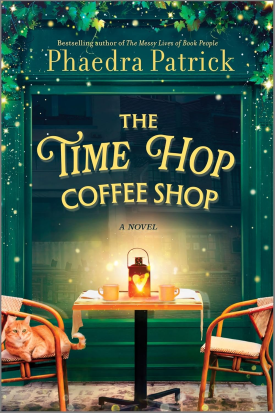Inspector Alan Grant Books In Order
Book links take you to Amazon. As an Amazon Associate I earn money from qualifying purchases.Publication Order of Inspector Alan Grant Books
| The Man in the Queue / Killer in the Crowd | (1929) | Description / Buy at Amazon |
| A Shilling for Candles | (1936) | Description / Buy at Amazon |
| The Franchise Affair | (1948) | Description / Buy at Amazon |
| To Love and Be Wise | (1950) | Description / Buy at Amazon |
| The Daughter of Time | (1951) | Description / Buy at Amazon |
| The Singing Sands | (1952) | Description / Buy at Amazon |
Alan Grant is an Inspector for Scotland Yard. Grant is a dapper man, who is smooth. Alan is a rarity, a Scotland Yard Inspector, rather than the private detective that would later be used to death in all of mystery writing. He later reasons, in “The Daughter of Time”, that Richard III (from Shakespeare’s play, folk memory, and history) is nothing but a Tudor construction. All while incapacitated in the hospital. Grant believed that people who are successful do not look for fulfillment through others, not even their spouses, rather through themselves.
“The Man in the Queue” is the first book in the “Inspector Alan Grant” series; it won the Dutton Mystery Prize and was also published under her pseudonym Gordon Daviot. This novel is set in London, and introduces a new hero, Alan Grant. In this case, he is supposed to figure out the identity of the victim, and how the man could possibly stab himself. All of which took place in a crowded theater, where there were no witnesses. Making it all very hard for Grant to piece together. The victim was waiting to see a hit musical called “Didn’t You Know?” while it is in the opening week of its run. As the line finally moves forward, after some pushing and shoving, a middle aged woman turns around to say something to the man pushing her. The man falls to the ground dead, and she notices a dagger sticking out of the man’s back. No one knows when the guy died, due to the fact that the crowd seems to have pushed him forward and held him upright for most of their time waiting. He has no identification, no tags or marks of any kind in his clothes. All police find is that the man has a service revolver that does not seem to be his, based on fingerprints.
Some readers liked that rather than have a certain villain to hope the police is able to catch, this book suggests that there is no villain. This book does not rely on tricky cases but rather motivations and personalities of the characters to drive the story forward. Some like that even though the book was written in 1929 that there is no dated-ness to the story, and looks into how a crime is or is not solved by the police. The author takes you along with Grant, so that not only will the reader, but also Grant will miss the big clue to show who the killer in the case is. The case seemed very realistic in the way it portrays police work and takes the reader through step by step. Circumstances through an investigation can convict an innocent person; this book shows the reasons that police need to be absolutely sure that they have the right guy before they convict someone of a crime.
Some readers did not like the book and felt that her writing was elitist and demeaning to anyone who was not upper crust. Some found the ending to have an unconvincing murderer (one who just turned up out of the blue), and an implausible murder to boot. Some people, due to the fact the book was written in 1929, do not understood some of Tey’s phrasing in the book or what she is talking about at times. Some also found her language to be prejudiced, dating the book. This is in reference to some of the racial names that a character call a suspect. Some found the book did not age well or was better when they read them long ago; they found the book boring, simple, and a waste of their time.
“A Shilling for Candles” is the second book in the “Inspector Alan Grant” series. A beautiful film actress and singer named Christine Clay is found in the sea cliffs of the south coast where a lot of people go to commit suicide. A hardened member of the coast guard knows that there is something wrong with the entire case. Inspector Grant knows that if the actress did commit suicide, she had to have a reason. Same as if someone had killed her. Throughout the investigation, investigators find out that she has led a troubled life. Her brother was spoiled by the pair’s mother, while Christine did not have enough money to even have consistent schooling. She has married a man who has money and power, but a few years into the marriage, is known as “Christine Clay’s husband” due to her own large star.
Fans of the novel feel that for a mystery writer, Tey likes to focus on the characters that populate her novels rather than perfect plotting. Not only that, but they are not always as one dimensional as they seem. Tey’s writing, some fans believe is full of humor, lively, and features range and depth in her characters that makes her an untouchable writer. Fans also say that her books hold up six decades after she has died. Readers like the book say that the book sounds great when performed for an audio book.
Some readers thought that the book has the weakest endings of one of Tey’s novels. Some also believe that the way the killer was able to pull off the killing was not very likely or believable; as well as too many red herrings, and too much chaotic additions to the plot to make the book great.
The series is most known for the novel “The Daughter of Time” that came out in 1951, and is the fifth entry of the series. The novel was named best mystery novel of all time by the Crime Writer’s Association in 1990. The series is also known for “The Franchise Affair”, that came out in 1948 and placed on the same list.
Two of the Alan Grant novels have been made into a movie. It was released in 1937 and was called “Young and Innocent”, which was directed by Alfred Hitchcock. It is based on “A Shilling for Candles” that came out the previous year. Another novel in the series, “The Franchise Affair” has been made into three films (once for a theatrical release in 1951, twice for television in 1962 and 1988, and once for radio in 2005)
Book Series In Order » Characters »


 Any issues with the book list you are seeing? Or is there an author or series we don’t have? Let me know!
Any issues with the book list you are seeing? Or is there an author or series we don’t have? Let me know!